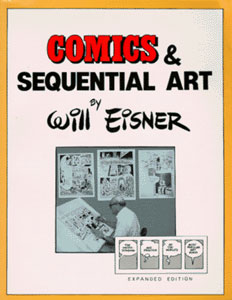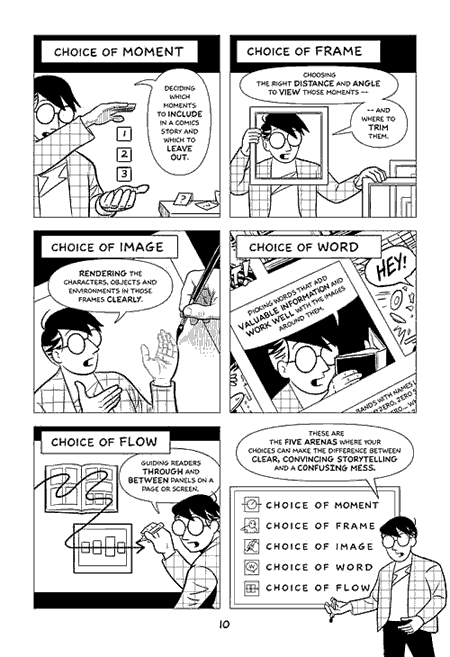
Posted on 04/26/2007 1:20:32 PM PDT by Sopater
SEATTLE POST-INTELLIGENCER
http://seattlepi.nwsource.com/local/313189_comics26.html

Donald Duck, Superman subjects for serious study
Thursday, April 26, 2007
By CHRISTINE FREY
P-I REPORTER
"Before we move on to Donald Duck, were there any questions?" instructor Leonard Rifas asks.
He then transitions to a lecture about the Disney comic and its illustrator, Carl Barks.
In this course about "sequential art" -- otherwise known as comics and graphic novels -- Seattle Central Community College students are studying the famous fowl and such characters as Felix the Cat and Superman.
It is the first time the community college has offered the course, though in classrooms across the country students are exploring the history and meaning of comics. By the end of the quarter, Seattle Central students will produce their own comic book, with each student creating a page based on the theme, "How To."
Tasia Bozek, who will enter the college's illustration program in the fall, is eager to try her hand at it. Though she's read many comic books, the 21-year-old didn't know much about their history. The course has taught her the stories behind the drawings.
"It just makes it seem much more mature," she said.
Seattle has already embraced the art form.
Comic book publisher Fantagraphics is based here, and the Seattle Public Library chose the graphic novel "Persepolis: The Story of a Childhood" by Marjane Satrapi as its selection for a citywide reading program last year.
Interest in comics and courses about them has grown nationally in recent years, said Ben Towle, co-founder of the National Association of Comics Art Educators.
The instructors who are teaching such courses likely grew up reading comics and are now studying them as academic subjects. Comics and graphic novels have become more popular in mainstream culture, and newspapers review them alongside traditional books. Society has also become more visual, with words and images being combined to communicate.
Studying comics can help students become more "visually literate," Towle said.
What makes comics unique is their combination of drawings and writings. But unlike other visual media such as television or film, the story unfolds at the reader's pace.
"You are the one that decides to move to the next panel," Rifas said.
The instructor, who has taught film at the community college, is himself a cartoonist and comic book publisher. Some of his own work includes "All-Atomic Comics" (about nuclear power) and "Corporate Crime Comics."
In a recent lecture, Rifas discussed one of the most famous graphic novels, Art Spiegelman's "Maus," which tells the story of the Holocaust with Jews depicted as mice and Germans as cats. He noted the number of Jews killed each day during World War II and how that compared with the daily casualties from the Iraq war and the recent killings at Virginia Tech.
 |
|
| In a recent lecture, Rifas discussed one of the most famous graphic novels, Art Spiegelman's "Maus," which tells the story of the Holocaust with Jews depicted as mice and Germans as cats. The historically significant publication from the 1980s legitimized comics, Rifas said. |
"Maus," published in the 1980s, was historically significant, he said, because it legitimized comics: If you could create a comic about the Holocaust, you could create a comic about anything.
The community college hopes to offer Rifas' course regularly, said Audrey Wright, dean of humanities and social sciences.
"I thought it probably would connect more with students," she said. "We have this visual society going on, and this seems like a perfect match in terms of dealing with the amount of visual stuff that students interact with, putting it in a place where it could be analyzed."
Kana Livingston, 24, was already a fan of comics -- particularly superheroes -- before taking the class. But it has since introduced her to underground and local comics.
She likes comics, she said, for being imaginative.
"It was like watching a TV or a really good movie, but you were more involved in it," she said.
P-I reporter Christine Frey can be reached at 206-448-8176 or christinefrey@seattlepi.com.
© 1998-2007 Seattle Post-Intelligencer
The daily death toll in Iraq and the VT shooting have nothing to do with government instituted killing like the Holocaust.
Iraq and VT both reflect random acts of violence (even if the suicidal attackers put some planning into their targets).
It would’ve been more appropriate to compare it to genocidal purging in any of a number of regions. It could be said that if we do not offer some crackdown on the “insurgency” (which is NOT an Iraqi led resistance), the resulting government rule that emerges from the chaos could likely be oppressive to any of a number of religious minorities, including variant sects of Islam BY other muslims.
They likely moved on to more fruitful pursuits.

Two books will give you lots to ponder:
Will Eisner's Comics And Sequential Art

Scott McCloud's Understanding Comics

Ha! I ended up jumping in and out of this thread, I posted an example from each...
Great stuff!
comic book, old-foggies-will-always-have-problems-with-them, ping.
how u doing, pumpkin?
Now I know why American jobs are going to people who were educated in other countries.
Ye onry pwobwem I h-h-h-have wit de "comic books is d-d-d-dat de idiots witing dem don't know de m-m-m-m-meaning or dewivation of "COMIC!
Nope - I took pre-Renaissance art history. Lots of ancient and medieval sculpture and architecture, not so many paintings.
And the early Christian art was that we did see was, IMO, among the most impressive seen in the course - especially the Gothic cathedrals.
Disclaimer: Opinions posted on Free Republic are those of the individual posters and do not necessarily represent the opinion of Free Republic or its management. All materials posted herein are protected by copyright law and the exemption for fair use of copyrighted works.